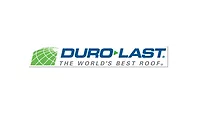Single-ply Roofing
There are many single ply-roofing systems on the market today, offering roofing contractors a wide array of choices. Single-ply systems provide a number of advantages. They are flexible and user friendly, and they have the ability to be installed without having to use heating equipment or hot asphalt. In addition, single-ply systems are easy to maintain and repair with a relatively high return on the building owner's lifecycle cost ratio.

What are the advantages of thermoset single-ply systems?
Thermoset membranes and systems have changed over the years but the base material EPDM (ethylene propylene diene monomier), or rubber, has remained constant. EPDM roofs, while originating in the early 1960s, gained in popularity during the mid-1970s with the first oil embargo that negatively affected the built-up roofing market. EPDM's strong point has been its long-term weathering ability and ease of installation that requires a minimum of equipment and training.EPDM sheets are strong and flexible, easily adapting to a variety of roof configurations. Its larger sheets reduce the need for the numerous seams or laps with other membrane systems. And most importantly, EPDM's ability to be successfully applied under a wide range of weather conditions has allowed the roofing contractor to meet his completion deadline when other systems could not.
The advent of seam tapes, and more recently factory-applied adhesive tapes, has given increased reliability to one area of concern, the EPDM field seam. The use of adhesive tape has reduced callbacks and given the roofing contractor the needed confidence that the field seam will perform up to the long-term durability of the sheet itself. A second area of concern has been the dark color of the EPDM sheet when using mechanically attached or fully adhered systems. This has been overcome with today's white, acrylic coatings, which reduce building energy consumption. This is especially helpful in hot climates where white or light-colored roofs may be necessary to meet codes that require the membrane to meet or exceed the solar reflectance index (SRI).
Mechanically attached systems also have been improved by utilizing reinforced EPDM sheets, which allows external forces to be transferred to the fastening devices and reduce stress in the membrane components.
What are the differences between PVC and TPO?
Both TPO (thermoplastic polyolefin) and PVC (polyvinyl chloride) are thermoplastic membranes. Characteristically, they are light in color, have excellent reflectivity and are hot-air weldable. In addition, both are easy to flash and make excellent membrane systems.Their history, while somewhat similar, points out a few major differences. PVC, the older, more established system, has a 20-year history of proven performance. TPO has a five- to seven-year history with varying changes of formulation. While both have their own ASTM standard, the TPO standard was just recently adopted in March of 2003. Roofing contractors report that their crews have found both sheets to be user friendly, although their crews are not as experienced with the newer TPO.
Product performance also varies between the two. PVC is naturally fire resistant, needing less fire retardant additives to achieve its rating. TPO on the other hand, requires additional additives to achieve fire resistance performance. PVC generally uses narrower sheets than TPO. The jury is still out on the long-term wind resistance of wider sheets with their increased flutter and higher loading at the fastener and seam.
Per ASTM standards, PVC has a minimum of 16 mils of sheet covering its reinforcement while the standard for TPO is only12 mils, or 25 percent less over its reinforcement scrim. Lastly, PVC has a wider temperature range to make a successful hot-air seam weld. Welding PVC also produces a "tell-tale" bleed-out that gives the applicator an assurance of a properly installed weld. Unlike PVC, TPO welds do not have the bleed-out indicator. Also, TPO has a narrower temperature range for achieving a successful weld, often resulting in a slower seaming process, which may produce "cold welds" or "false welds" if proper heat-welding procedures are not followed.
How do single-ply systems recover an existing roof?
Rarely is an existing roof replaced simply because the owner has budgeted to do so. Invariably, it is due to the expense or inability to continue to maintain the roof's watertight integrity. Sometimes, budgets are tight and the most economical roofing solution is sought. In many cases, a stopgap solution is used, such as fixing the leak and attempting to dry out the insulation, if wet. This usually does not address potential deck deterioration. In most cases with wet insulation, corrosion will be a problem where metal fasteners have been used to secure the insulation boards to the deck.With most roof replacements, the conservative approach would be to tear off the existing membrane system down to the deck. Often local building codes and moisture within the membrane system will dictate the options available. Most existing conditions will be discovered by an inspection of the roof including a non-destructive moisture survey. This also is the time to correct any areas of ponding or inadequate drainage. Often an additional layer of tapered insulation will help.
When re-roofing over a properly examined and prepared existing built-up roof, broom off any loose gravel. If weight is a concern, spud off the asphalt and gravel top layer. Cover the existing roof with an adequate recover board that is compatible with the membrane. If more insulation or tapered insulation is required, it may be applied following the same parameters. The appropriate single-ply system can then be applied. A light-colored membrane should be used if solar reflectance is a desired property.
Summary
Which system to chose is dependent on a number of factors. Which insulation type and thickness fits the building owner's pocket book? Will tapered insulation be required or will the slope be built into the deck? Which of the membrane systems works best for the building owner? And most importantly, has the roofing crew been trained to install the membrane system properly?Single-ply roofing is a very viable choice in many situations, offering good value for the building owner. EPDM has been a long-time performer with good reliability and a 20-year proven track record, and thermoplastic membranes continue to increase their market share. Much of the overall success of single-ply systems can be attributed to the quality of the installed membrane system. Today manufacturers are producing high-quality membranes for a reasonable value, and the roofing contractor is taking the time and care to install them properly.
Looking for a reprint of this article?
From high-res PDFs to custom plaques, order your copy today!



